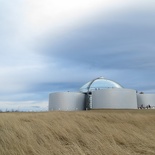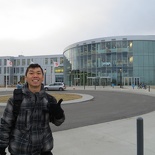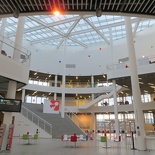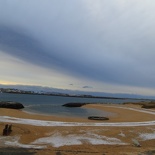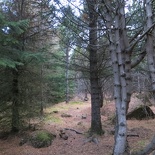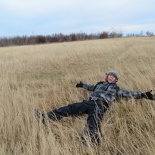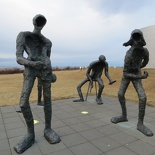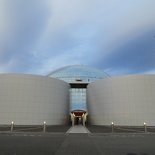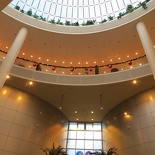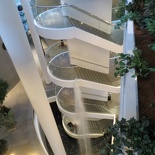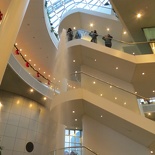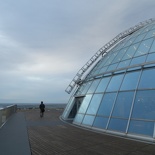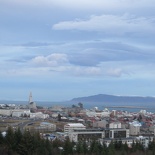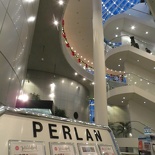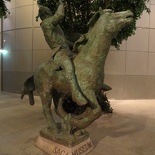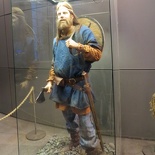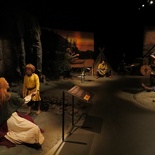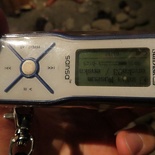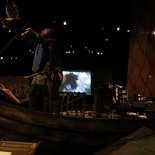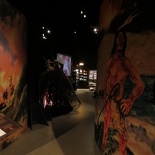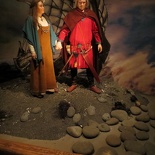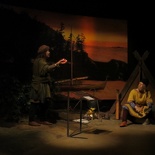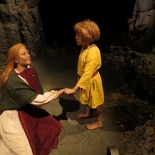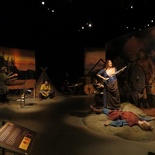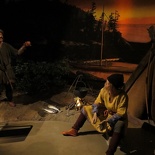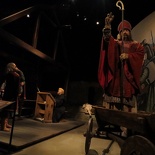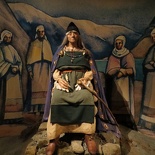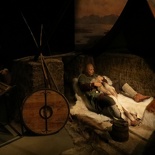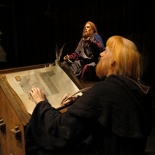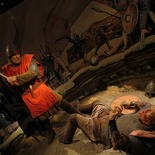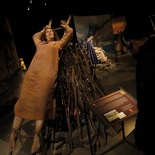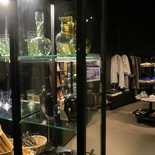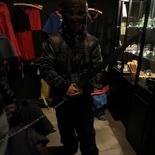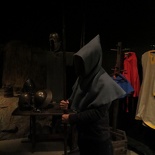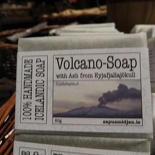Overlooking the Icelandic city of Reykjavík perched on a high hill is the Pearl building of Iceland. Called the Perlan in Icelandic, it is a landmark building of the capital of Iceland cladded in white paint topped with a domed shaped glass structure, giving it a modern iconic look, almost like a work of modern architecture and art. You can access the building hill via a direct driving road route straight up to the building car park up or by taking a short trek up the hill through a public park from the Iceland University.
Perlan History
The building had more humble beginnings, built on top of hill Öskjuhlíð serving as a high site for storage of hot water for decades, pretty much like a water tower. In 1991, Davíð Oddsson, during his time as mayor of Reykjavík repurposed the site as a new icon of the city in benefit of the people.
The six storage water tanks were decommissioned, and now reworked as large event rooms, each serving a different need and forming the mainstay shape and form of the current building which stands till today.
A central steel and concrete structure was constructed in between all the tanks serving as the building’s main lobby. The lobby is modern, complete with a basement fountain with sprouts water and an open staircase serving all floors of the 25.7 meter tall building, including the hemispherical open viewing observation gallery at the top. The building was designed by Ingimundur Sveinsson.
Exploring the Perlan
The said 6 gigantic water tank buildings are connected to this central lobby, which is also the Perlan’s main entrance, linking them to all building amenities. The Perlan is home to a number of commercial users, event and function halls, galleries as well as museums. There is an observation deck on the fourth floor, which you can access via the elevator or stairs up to the top floor. Access to the top floor viewing deck is freely accessible like most parts of the building.
The top deck is open, airy, laid with wooden flooring. It contains panoramic telescopes at all six corners of the deck, offering full 360 degree unobstructed views from the top of the building. It overlooks the entire city of Reykjavík and its surrounding landscape and glaciers. In winter, the chilly winds can get pretty strong up here on the observation deck, with the winds strong enough which you can lean into.
Museums of the Perlan
Each of the building “tanks” are also segmented into separate floors, each housing a museum of interest. Inside one of the tank is the Ice Cave Museum with an artificial ice cave made out of real ice, not much of an allure as you can see a real one up close and personal out in the Icelandic wilderness. The museum is largely wheelchair accessible and is suitable for all ages.
If you are history museum buff, there is the Saga Museum- one of the first of the few museums located in the Perlan is recommended. All museums in the Perlan charges an entrance fee, there are discounts for students and seniors. The main Perlan building opens 10 am to 6pm every day including Easter, while each of the museum galleries operate with their own operating timings. The museum will see an addition of a Planetarium, Northern Lights museum and the Icelandic Museum of Natural History in the near distant future.
The Saga Museum
The Saga Museum is an Icelandic history museum, telling the early story of Iceland through life-like silicone figurines, handcrafted weapons, artifacts and handmade Viking clothing of the era. The Saga museum opens 10am – 6pm in summer and 12pm to 5pm in winter months (1st October-31st March), as such, the museums could be closed even if the main Perlan building isn’t.
The internal galleries sit in one of the four “water tank” structures of the Perlan building. It showcases static exhibits from the 17 stages of the Icelandic Sagas starting from the start of Iceland in the making. introducing the First Inhabitants (Papar) from their The Exodus from Norway (Hrafna-Floki).
As the museum is leanly manned, information about the displays are told through self-guides. You have the choice to be guided through the museum with an audio device in a variety of European languages (French, German, Russian, Spanish and Swedish) including English or if you feel like it, Icelandic. The audio guide can also be bought in the form of a booklet at the front desk.
Being guided through the Viking Museum with this audio-guide has it advantages, as it intimately recreates key moments in Icelandic history, moments that have determined the fate of the Icelandic people, and which give a compelling view into the rough and nomadic lifestyle of early Icelanders settlers (such as the first Icelander Ingólfur Arnarson) have lived on the volcanic island for more than a millennium.
The true Icelanders
You are introduced to Skalla-Grímur and Egill, who were believed to be the true Icelanders. This includes the introduction of the Celts in Iceland (Melkorka Mýrkjartansdóttir). There was mention of Egil’s Saga, a notable Icelandic saga (family saga), and how the early lives of the clan of Egill Skallagrímsson (Anglicised as Egil Skallagrimsson), an Icelandic farmer, viking and skald. The display covering this saga focuses on the development from the years 850–1000 AD and traces the family history from Egil’s grandfather to his offspring.
The main focus of the museum is storytelling. You enter a journey into a turbulent past in Iceland history with these historical moments were recreated in the most authentic way using life-like replicas of historical Icelandic figures, based on descriptions found in the Viking sagas and chronicles.
The displays comprises of nicely themed atmospheric displays complete with life-sized wax-like figures set to showcase notable scenes as part of the Icelandic history, allowing you to view Icelanders ways of living in the historical past nearly face to face.
Early sea voyagers
The Viking Age running from 800 to 1066 AD will have to be the most famous exploratory and trade period of Scandinavian history. At that time, the Norse seafarers took control of all the sea passages around northern and western Europe including critical water trade routes in the east and southwards to Russia. The Vikings in their long sea journeys went out as far south as the Mediterranean Sea. On their voyages around the oceans, they discovered and settled uninhabited islands, among them Iceland, the Faroe Islands and Greenland.
Leif Erikson or Leif Ericson (Old Norse: Leifr Eiríksson), a Norse explorer from Iceland who was also known as “Leifur the lucky” who lived from 970 to 1020 AD. He was the first known European to have discovered continental North America (excluding Greenland), even before the explorer Christopher Columbus.
According to the Sagas of Icelanders, Leif established a Norse settlement at Vinland (North America), tentatively identified with the Norse L’Anse aux Meadows (a ship repair station established by archaeological evidence) on the northern tip of Newfoundland in modern-day Canada.
There was a scene of Freydís Eiríksdóttir, sailed to Vinland in the early 1000’s and was the daughter of the famous “Erik the Red” viking. She was described as being Leif Erikson’s full sister in the Saga of the Greenlanders (Grœnlendinga Saga) and as being his half sister in the Saga of Erik the Red (Eiríks Saga Rauða). Her role in Iceland as a Heroine or Ogress is often debated in the history of Iceland.
Open galleries
The museum displays are atmospheric, going in an open fashion with the figures modeled after the most historical figures of Iceland tied with these major events in the Icelandic history. You can get up close with the figurines, and even photograph yourself with the historical encounters.
Together with information boards, Icelandic history is brought to life set in the scenes of an early Iceland, from the time of the earliest settlers, in a unique way. The figures complete with realistic background, when photographed properly, allows you to recreate the scenes like how they appeared in real life. Photography in the galleries is welcome though the use of camera flashes is not recommended.
Most of the displays here are new and recreated works, but authenticity preserved as items, such as clothing are made using the very same methods as the Vikings used for added authenticity. If you are looking more into historical artifacts, the Icelandic National Museum will be a more fitting place. You can have a go at even trying on era-clothing such as tunics, scale mail and helmets, as well as have a go at welding the heavy cast-iron medieval weapons. All wooden artifacts have been treated in a way that both enhances their appearance and make them look genuinely old.
Parliament of Iceland
You are also introduced to the Althingi as the national parliament of Iceland. It is claimed to be the oldest parliament in the world. The Althing was founded in 930 AD at Þingvellir (translated into thing-fields) and it is situated approximately 45 km east of what later became the country’s capital, Reykjavík. Even after Iceland’s union with Norway in 1262, the Althing still held its parliamentary sessions at Þingvellir until 1800, when it was left empty for 45 years following the parliament relocation to the present Alþingishús building in Reykjavík.
The person of interest here with respect to early Icelandic legislature and parliament will be Thorgeir Ljosvetningagodi Thorkelsson (Þorgeir Ljósvetningagoði Þorkelsson). Born on 940 AD, Thorgeir was a prominent lawspeaker in Iceland’s Althing from 985 to 1001. In the decision to Iceland’s legislative assembly to adopt Norse paganism or Christianity, Thorgeir played a key role for the island introduction and conversion to Christianity. It had been said that Thorgeir, himself a pagan priest and chieftain (a gothi), decided in favor of Christianity after a day and a night of silent meditation under a fur blanket. This averted potentially disastrous civil and religious conflict.
Guðmundur (godi) Arason who lived from 1161 to March, 1237 was an influential Icelandic saintly bishop of the 12th and 13th century who took part in increasing the powers of the Catholic Church in medieval Iceland. He was deemed to be a Benefactor of the Icelandic People and was often referred to as the Gudmund the Good (Guðmundur góði). His story is told through his recording in several manuscripts, most notably in the Prestssaga Guðmundar góða.
Snorri Sturluson (1179 to September 1241) was introduced as one of the main figures of the Icelandic parliament, begin elected twice as law speaker at the Icelandic parliament, the Althing (which is notably too the world’s longest parliament). Snorri is also an inspired poet and historian.
Wars and Reformation period
Among the more gruesome events which can be experienced there are the execution of Jon Arason (Iceland´s last Catholic bishop) and the burning of the stake of Sister Katrin (also known as the Iceland´s first heretic martyr). Jón Arason who lived from 1484 till his execution on November 7, 1550 was an Icelandic Roman Catholic bishop and poet. He was executed in his struggle against the imposition of the Protestant Reformation in Iceland.
You get a taste of the famous and bloody battle at Örlygsstaðir too, and possibly one of the major wars in Icelandic history. The Battle at Orlygsstadir and the Black Death were one of the few darker parts of the Icelandic history. The Battle of Örlygsstaðir was a historic battle fought by the Sturlungar against the Ásbirningar and the Haukdælir clans in northern Iceland. The battle was part of the civil war that was taking place in Iceland at the time between various powerful clans during the time known as the Age of the Sturlungs.
The Black Death that led to the destruction of more than a third of the Icelandic population was the country’s first brush with infectious diseases. Also not to be mistaken for a distilled brand of schnapps that is considered a signature Icelandic liquor.
The galleries end with the museum store as well as a try-out section you can have a go at dressing up in a variety of era clothing, weapons, armour and everyday objects were constructed using traditional methods passed down through the ages. The weapons were specially crafted and the wool and linen articles dyed by hand. There were also a couple of unique peculiar Icelandic items on sale specific to the region, such as volcano soap.
You are good with the Saga museum for about 2 hours. It is not a large museum, but one of the few insightful ones despite not having much historical items on display. It is suitable for both the young and old alike.

